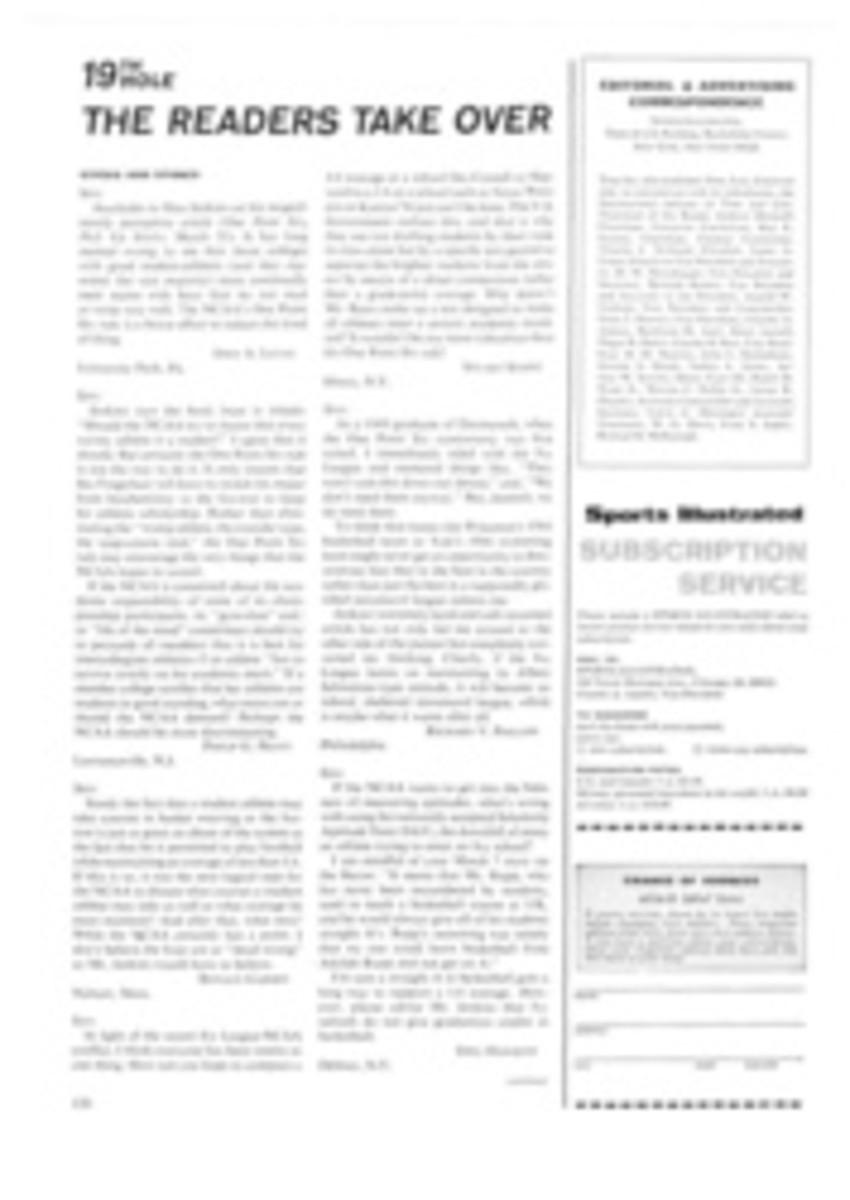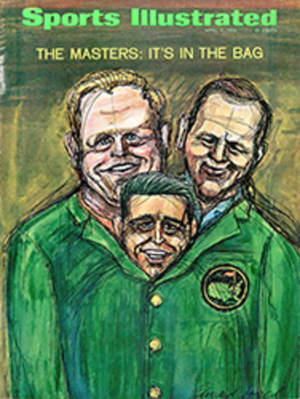
A storm in a calm over Tempest
In theory, the One-of-a-Kind regatta which takes place every three years or so in the waters of Florida is supposed to make sea lawyers either put up or shut up. In theory, after its three days of interclass racing are over, there can be no more questions or arguments about which boat is best or which class is fastest. In theory, that is.
In practice, by matching single representatives of almost every one-design class against boats of every other class, the One-of-a-Kind starts a lot more arguments than it ever finishes. And it was no different last week as a wildly disparate fleet of 86 mismatched craft sailed and drifted around Tampa Bay.
Because of the enormous range and variety of boats present, there is always an attempt at the One-of-a-Kind to equalize inequalities by the use of a rating formula, but everyone knows that what really counts is crossing the finish line first. This year everyone was watching to see which of two particular boats, the 23-foot Star or the 22-foot Tempest, did it more often.
Ever since 1932 the Star, which is sailed almost everywhere in the world, has been the official Olympic two-man keelboat. It wants to keep that honor. But the Tempest is also a two-man keel-boat. Newly designed by England's Ian Proctor, she made her European debut by beating the transoms off eight other would-be Olympic contenders in trials last year. Since there is room in Olympic competition for only one class of two-man keelboats, the partisans of the Star class are not eager to have the Tempest chosen.
At Tampa Bay the rivalry between the two classes cast a wind shadow over the rest of the fleet. The Tempest was skippered by John Oakeley, who had sailed her to victory in Europe last year. The huge (5,000 boats) Star class had sent its best boat and skipper to St. Petersburg: taciturn World Champion and Olympic Silver Medalist Dick Stearns, who came from Chicago with his winning boat Glider. A lone gold star shone on her sail like a campaign ribbon to denote her world-championship status and superior rank.
Beyond the fact that they are both two-man keelboats, the Star and the Tempest have little in common. The Star has a V bottom, the Tempest a round bottom. The Tempest has a lightweight hull. The Star is a heavyweight. The Tempest is fitted with a trapeze that allows her crew to swing out like circus acrobats to prevent her heeling. The Star's crew must climb out on her side and hang along the weather rail like limpets. The Tempest can set a spinnaker for reaching and running, the Star must rely on jib and mainsail alone. The Tempest can climb up on a plane. The Star must slice through the waves.
"The Star's a jolly good boat," explained Tempestman Oakeley before the races started, "but it's not truly international because it's not a good heavy-weather boat. I once saw 12 Stars in France go off the ramp in a 40-mph blow, and within a minute and a half they'd all lost their masts." Not so, said Starman Stearns: "I've sailed in a 45-knot blow with this mast, and I didn't lose it."
Stearns is almost as patronizing about the Tempest as Oakeley is about the Star. "The Tempest's a good boat," he admitted charitably, "but it doesn't have the sensitivity of a Star. It lacks that fine feeling. You can build a faster boat just as you can build a faster automobile, but that's not what sailing is all about. The Star is a challenging boat. The Tempest," concluded Stearns, throwing the newcomer a biscuit, "is a nice family boat."
At the starting line on the first day what little wind there had been gasped and died, leaving the fleet at the mercy of a slow but relentless tide. Patience rather than skill became the important virtue. The eight-mile course took nearly as many hours to complete, but at the end, well in front of their division, was the Star, followed by the Tempest.
Next day, in a breeze only slightly stronger, the Tempest came up from behind and finished first to the Star's third.
The third race was postponed until late in the day in hopes that a breeze might finally come up. The crews fretted around the clubhouse drinking beer and Cokes. They were told a gun would signal departure from the dock for the starting line. "I reckon," said Oakeley, "it'll be like Le Mans: bang! and everyone jumps into their boats."
Bang went the gun at last—and so it was. Everyone jumped for his boat, and the fleet headed for the line once more. Running lazily downwind, the spinnakers in blue, white, red, flame, green, black and parti-color made the boats appear more like a collection of Christmas ornaments than a racing fleet. Notable, of course, for her lack of any spinnaker whatever, was the Star. Not surprisingly, she finished behind Tempest, which seemed to enjoy this doldrums kind of sailing.
Star won the next race in an eight-knot blow. Then Tempest beat the Star in the fifth. This final win gave Tempest the lead over Star in points, which proved to the Tempest crowd that theirs was the better boat. All it proved to Star people was that Tempest can sail fast in light air.
Whether or not the Tempest will ultimately replace the Star in Olympic ranks depends on a lot more than a freak compilation of racing points on Tampa Bay. True, no victory ever hurts a boat, and the O'Day Corporation which, along with Plas Trend and the Schock Co., plans to build and market the Tempest, probably doubled its bets after last week. They already have 54 orders on hand. But 54 Tempests, even when added to the hundreds ordered overseas, is a long way from 5,000 Stars. The new boat, as America's Cup Skipper and IYRU Committeeman Bob Bavier pointed out, must still prove its popularity throughout the world of Olympic yachtsmen. It must prove also that it can entice sailors as able as those who already campaign in Stars.
Tempest Skipper Oakeley is confident of the outcome. "By 1972," he said flatly, "the Star will be replaced." Star Skipper Richard Stearns did not actually sniff audibly, but what he said sounded like a sniff. "I thought," he said condescendingly, "that Tempest would be faster."

